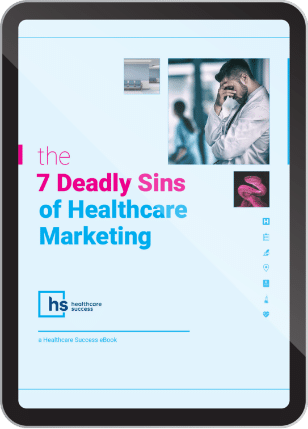From Prospect to Patient to Referral: The Healthcare Decision Journey
 Eight out of ten times (probably more), the Internet is where the first encounter between a doctor and a prospective patient occurs. But it doesn’t stop there.
Eight out of ten times (probably more), the Internet is where the first encounter between a doctor and a prospective patient occurs. But it doesn’t stop there.
Long before an individual selects a healthcare provider, hospital or facility for their medical needs, they often begin their decision journey with online due diligence. And when providers and communications professionals understand the process steps, they are better equipped to influence and guide the individual from prospect to patient and beyond.
The trouble is, the entire process is increasingly complex. Individuals—consumers/prospective patients—do not follow the traditional linear path from “consideration” to “purchase.”
Way back then (whenever “then” was), the process was simply: Browse > Shop > Buy. Various sources apply different names and sub-divisions, but the more detailed “funnel” has become:
- AWARENESS: Sometimes called perception of need or problem recognition.
- CONSIDERATION: The start of the information search, evaluation and education.
- INTENT: The choice narrows, often the final decision.
- PURCHASE: First transaction (encounter, appointment) completed.
- LOYALTY: Presuming a positive and satisfactory patient experience, the individual is “bonded” to the provider, and likely to return for future needs or repeat purchases.
- ADVOCACY: The “post-purchase behavior” includes references, recommendations, referrals and word-of-mouth.
The added complexity of the decision-making process is mapped in an infographic by the Social Health Institute, comparing THEN v. NOW and MENTAL v. PHYSICAL quadrants. Historic PHYSICAL needs—Economic, Severity, Timing, Availability and Distance—are shown as the same in THEN v. NOW.
It is the MENTAL considerations that have grown from three basic items THEN…
- Personal Experience
- Advertising (hearing from the brand)
- Word of Mouth (hearing from others)
…to also include NOW…
- Online Information (WebMD, etc.)
- Social Media (Facebook, Twitter, etc.)
- Rankings/Ratings (Consumer Reports, HealthGrades)
- Patient Reviews (Yelp, Vitals)
- Online Patient Communities
In reality, the picture is often more complex. We’d certainly add to this list the provider’s own Internet presence, such as their website, YouTube, blog. Plus, there are organic search results, directory listings and Find A Doctor indexes from hospitals and medical societies.
No matter how you perceive the real-world process steps, it’s important to recognize that the influence factors are rapidly increasing, and that patients use the Internet to be educated, informed and to do due diligence more than ever before.
For related reading, see: Protecting Your Reputation: Doctors Who Ignore Social Media Are at Risk.








